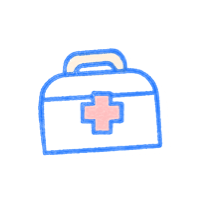Let’s dive into pharmacology for EMTs, AEMTs, and paramedics. Imagine we give you a list of statements and ask which one is true about the mechanisms of action of epinephrine and atropine. Would you know the answer? By the end of this, you will.
Check out this helpful video from our 'Enhancing EMS Skills' YouTube series!
First, every medication has three names:
- Chemical name: This one is mostly for the lab. For example, acetaminophen is the chemical name for Tylenol.
- Generic name: You’ll see this often on medication lists and pill bottles.
- Brand name: This is what patients often recognize, like Tylenol.
Now, let’s talk about drug cards. Here’s what a typical drug card includes:
- Generic and brand names
- Class: This tells us what the drug does, like antihypertensive or antipyretic.
- Mechanism of Action (MOA): This is how the drug works in the body.
- Indication: This is why the drug is given.
- Contraindication: This is why the drug is not given.
Understanding the MOA is crucial. For example, if a drug increases heart rate, we know it can be used when a patient’s heart rate is too low, but not when it’s already high. We also need to consider side effects, dosage, and the route of administration (IV, IO, oral, intramuscular, etc.).
Let’s talk about the sympathetic and parasympathetic nervous systems:
Sympathetic (fight or flight)
Think of running away from a bear. Your pupils dilate, heart rate and blood pressure go up, respiratory rate increases, and digestion slows.
- Sympathomimetics: Drugs that mimic the sympathetic nervous system (e.g., adrenergics such as epinephrine, norepinephrine, and albuterol).
- Sympatholytics: Drugs that inhibit the sympathetic nervous system, leading to parasympathetic effects (e.g., beta-blockers such as propranolol, metoprolol, and alpha-blockers such as prazosin).
Parasympathetic (rest and digest)
Think of winding down before bed. Pupils constrict, heart rate and blood pressure drop, respiratory rate slows, and digestion increases.
- Parasympathomimetics: Drugs that mimic the parasympathetic nervous system (e.g., cholinergics such as pilocarpine, bethanechol, and donepezil).
- Parasympatholytics: Drugs that inhibit the parasympathetic nervous system (e.g., atropine, scopolamine, and ipratropium).
While understanding these systems is essential, it’s also crucial to grasp how different drugs interact with receptors in the body. This brings us to the concepts of agonists and antagonists.
Agonists and Antagonists
- Agonist: A drug that activates a receptor (e.g., Phenylephrine, a drug causing vasoconstriction by activating alpha-1 adrenergic receptors).
- Antagonist: A drug that blocks a receptor’s action (e.g., Propranolol, which blocks beta-adrenergic receptors).
Receptors
- Alpha 1: Causes vasoconstriction when activated (Phenylephrine)
- Beta 1: Increases heart rate and contractility (Dobutamine).
- Beta 2: Causes bronchodilation (Albuterol); commonly used for asthma.
Considerations
- Beta-blockers: End in “-olol” and block beta receptors. These can lower heart rate and blood pressure but might not be suitable for patients with asthma due to potential bronchoconstriction.
Epinephrine and Atropine
- Epinephrine: A sympathomimetic acting on alpha 1, beta 1, and beta 2 receptors.
- Atropine: A parasympatholytic that blocks the vagus nerve, reducing parasympathetic activity and increasing heart rate. It is used for symptomatic bradycardias because it raises heart rate by lowering parasympathetic response.
A solid understanding of pharmacology is essential for EMS professionals. By mastering the different drug names, classes, and mechanisms of action, you can make informed decisions in the field, ensuring the best care for your patients. Keep refining your knowledge and skills, and you’ll be well-prepared to handle any medical situation that comes your way.

